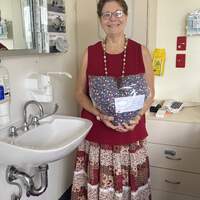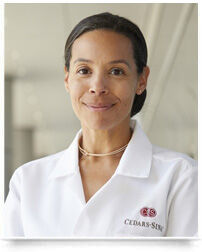Surgeon Roundtable: Valve-Sparing Aortic Root Replacement vs. Bentall Procedure
Written By: Adam Pick, Patient Advocate & Author
Medical Expert: Eric Roselli, MD, Adult Chief of Cardiac Surgery at Cleveland Clinic, and Marijan Koprivanac, MD, Cardiac Surgeon at Cleveland Clinic
Published: August 24, 2022
Over the past 10 years, we have seen an ongoing trend and favorable outcomes to complex procedures that “spare” the patient’s aortic valve. These procedures, including Valve-sparing Aortic Root Replacement, for patients with aortic valve disease and aortic aneurysms, often confuse patients compared to more traditional aortic valve replacement and Bentall procedures.
To provide you the latest insights and advantages of aortic valve reconstruction therapies, we were lucky to coordinate a “Surgeon Roundtable” with Dr. Eric Roselli, the Chief of Adult Cardiac Surgery at Cleveland Clinic, and Dr. Marijan Koprivanac, cardiac surgeon at Cleveland Clinic. Here are the highlights from this fantastic discussion:
Key Learnings About Aortic Root Surgery
Here are important educational highlights down from this special interview with Drs. Roselli and Koprivanac:
- Aortic valve-sparing root replacement is an important procedure for addressing the dilation of aortic root aneurysms for select patients. As Dr. Koprivanac states, “We can replace the root, with saving the valve and basically restoring normal anatomy of the patient, allowing them to have very basically normal life durability of that valve, without having more interventions or having any anticoagulation down the line.”
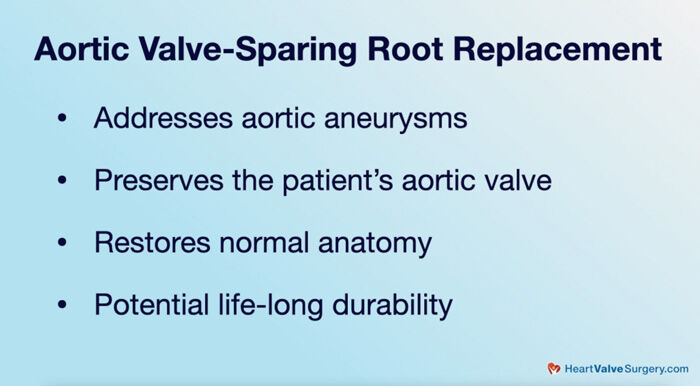
- When patients have a good understanding of the unique function of the aortic valve within the aortic root, the patient advantages for keeping or “sparing” their own aortic valve is compelling. Dr. Roselli states, “The aortic valve isn’t just some moving part sitting at the top of your heart. It’s part and parcel of that first part of the aorta that we call the root. In order for the aortic valve to function well, there’s a whole bunch of different structures that are involved with it, what we call the annulus or the opening to the heart where the valve sits.”
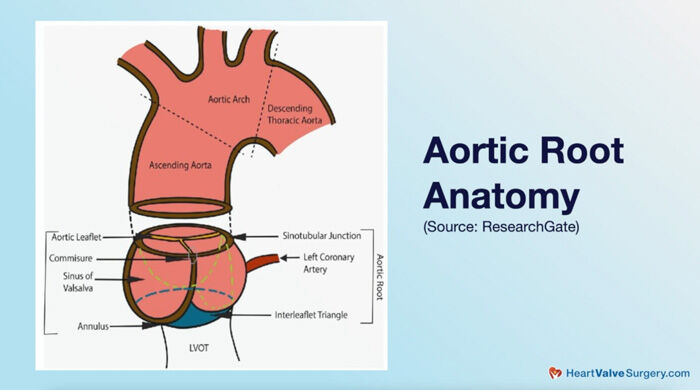
- Unlike a Valve-Sparing Aortic Root Replacement, a Bentall Procedure completely replaces the aortic valve and aortic aneurysm. For patients who undergo a Bentall Procedure and receive a tissue valve replacement, the durability of that valve is typically limited to 10-15 years. Patients undergo a Bentall Procedure and receive a mechanical valve replacement need to go on blood thinners for the rest of their lives.
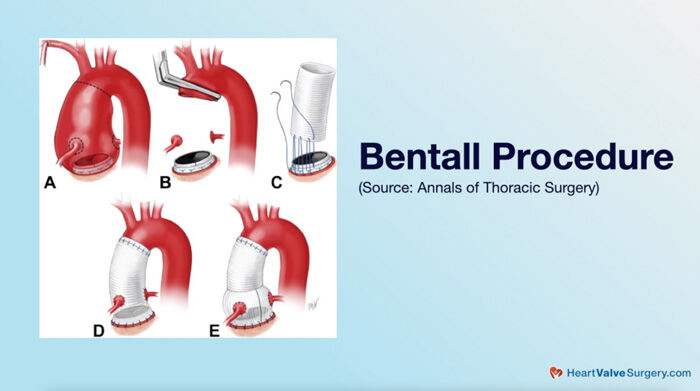
- According to Dr. Roselli, a key advantage of the Valve-Sparing Aortic Root Replacement is that patients get to keep their living aortic valve without a lifetime without anti-coagulation.
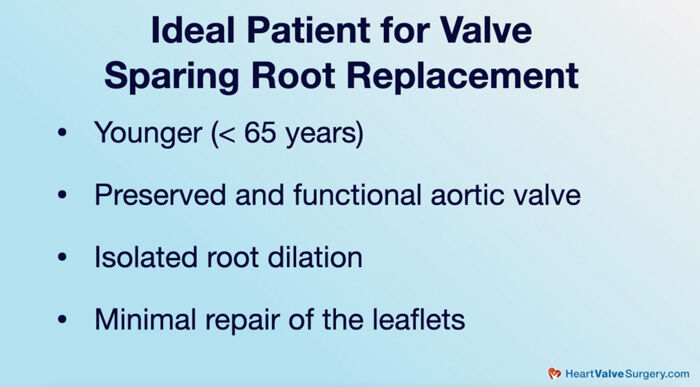
- Valve-Sparing Aortic Root Replacement operations, also known as “Reimplantantion” procedures, are typically reserved for a select group of patients. According to Dr. Koprivanac, the ideal patients are younger (<65 years), have a preserved and functional aortic valve, isolated root dilation and minimal leaflet repair.
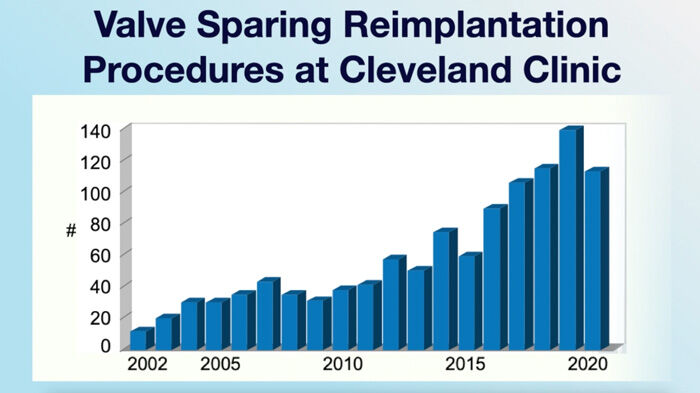
- Cleveland Clinic has extensive experience with Valve-Sparing Aortic Root Replacement procedures. Dr. Roselli states, “We do over 1,000 thoracic aortic surgeries a year. I think it was 1,063 last year we showed at the annual report. A 122 of those were these valve reimplantation procedures. We’ve consistently been doing over a hundred a year. We can do them quickly and safely.”
Many Thanks to Dr. Roselli, Dr. Koprivanac & Cleveland Clinic
On behalf of our patient community, many thanks to Dr. Roselli and Dr. Koprivanac for sharing their insights, research and experiences specific to aortic valve and aortic root surgery We also want to thank the entire Cleveland Clinic team for taking such great care of patients with heart valve disease.
Related Links:
- See Dr. Eric Roselli’s Interactive Surgeon Profile
- Heart Surgery Innovations: Bicuspid Aortic Valve & Aortic Aneurysms with Dr. Eric Roselli
- Explore the Cleveland Clinic Heart Valve Microsite
Keep on tickin!
Adam
P.S. For the deaf and hard of hearing members of our community, I have provided a written transcript of this video below.
Video Transcript:
Dr. Eric Roselli: Hi, everyone. I’m Eric Roselli, the Chief of Adult Cardiac Surgery and the Surgical Director of the Aorta Center at the Cleveland Clinic. I’m here with one of the newest additions to our staff, Marijan Koprivanac, who is an amazing surgeon, to talk about the topic of aortic root surgery for patients who have aortic valve disease. Welcome, Marijan.
Dr. Marijan Koprivanac: Thank you for having me.
Dr. Eric Roselli: Of course. I think one of the questions that comes up first of all in this whole subject is what exactly is valve-sparing aortic root surgery? Why is this relevant – patients with valve disease. Tell us a little bit about the root and the valve. What’s going on there?
Dr. Marijan Koprivanac: Aortic valve-sparing root replacement is an important segment today in addressing the dilation of aortic root aneurysms. It is important in the ways that – for younger patients who have relatively preserved functional valve, we can replace the root, with saving the valve and basically restoring normal anatomy of the patient, allowing them to have very basically normal life durability of that valve, without having more interventions or having any anticoagulation down the line.
Dr. Eric Roselli: The aortic valve isn’t just some moving part sitting at the top of your heart. It’s part and parcel of that first part of the aorta that we call the root. In order for the aortic valve to function well, there’s a whole bunch of different structures that are involved with it, what we call the annulus or the opening to the heart where the valve sits. The root, that first section of the aorta, really sits inside the heart, doesn’t it? We often have to separate muscle off of that root of the aorta. The valve is suspended inside of that first section of the root. A lot of times people need a new aortic valve because it’s stenotic or degenerated or calcified, but a lot of times the primary problem actually involves the root itself. The other components of the valve are stretched out. That’s aneurysm that you’re talking about, right?
Dr. Marijan Koprivanac: Exactly.
Dr. Eric Roselli: A more conventional way to handle that root aneurysm is to replace everything. Those other options are often referred to as a Bentall procedure. Can you tell us a little about that?
Dr. Marijan Koprivanac: A Bentall is a more traditional way of dealing with this root surgery, where you have the aneurysm dilation of your aortic root, and it’s a little bit simpler because you just replace pretty much everything. You replace the aortic valve. You replace the root, the sinuses, all that complex anatomy that you mentioned. Then you pretty much just reattach those coronary buttons to the root. At the end you get this prosthetic valve instead of your own valve that you had, that if it’s mechanical you need anticoagulation. If you it’s biologic, it has certain lifespan durability.
Dr. Eric Roselli: As you were saying earlier, the advantage of one of those valve-sparing operations is you keep that living valve. I hope you’re right that it has the potential to last a lifetime.
Dr. Marijan Koprivanac: Correct.
Dr. Eric Roselli: Certainly, in the right selected patients where the moving parts still look healthy, our goal is to keep that living valve hopefully for a lifetime, without anticoagulation, right?
Dr. Marijan Koprivanac: Exactly.
Dr. Eric Roselli: Again, we talk about patients in these categories as though they have valve disease and they have root disease or maybe a combination of both, but it’s way more complex than that. There’s a whole spectrum of involvement of things. Which kind of patients do you think – let’s say which kind of patient is the ideal patient for one of these valve-sparing root replacements, what we refer to as a reimplantation procedure?
Dr. Marijan Koprivanac: Ideal patient would be a younger patient who pretty much has preserved his aortic valve. It’s a functional valve with isolated root dilation, the valve that requires minimum what we call tweaking or repair of the leaflets, and pretty much just requires replacement of the root itself, of the aorta.
Dr. Eric Roselli: I’ve noticed that over the years, as we’ve gained a better appreciation for this and we do these operations better, that we seemed to lower the threshold of when we do it, because if you wait until the aneurysm gets too big, certainly there’s the risk that you can rupture, and that’s a fatal complication. Of course, we want to avoid that. Also, if you watch it stretch for too long, it can cause the leaflets or the moving parts of the valve to be damaged. It’s a lot harder to save something after it’s been pretty beat up from that process. What we’ve got to do is pick that sweet spot when we think the aneurysm’s big enough that it might be dangerous to watch it too long, because we worry about it rupturing, but also get to it before the leaflets have been damaged. The cool thing is, in a center like ours, and other centers of excellence, with enough experience of these, we keep the risk really low.
Dr. Marijan Koprivanac: Absolutely.
Dr. Eric Roselli: There’s pretty good data from the national database that shows that the volume of aortic root surgery that a sector does correlates directly with the outcomes. When I say outcome, I mean the risk of death. In heart surgery, that’s always a risk. At our center, compared to even other university centers, our mortality rate is one third of those places – pretty cool, because we have such a huge experience. We do over 1,000 thoracic aortic surgeries a year. I think it was 1,063 last year we showed at the annual report. A hundred and twenty-two of those were these valve reimplantation procedures. We’ve consistently been doing over a hundred a year. We can do them quickly and safely, just as safely as that Bentall operation that we were talking about. What about if the patient comes to us and they have a dilated root and their valve is leaking?
Dr. Marijan Koprivanac: That’s a great question. You already mentioned there are multiple shades of gray. It’s not everything black and white. Of course, if there is a big root, big aneurysm, almost all of the valves are going to be leaking, because they’re not going to be coapting well. The question is what kind of a leak it is. Would this be what we call a central leak, a symmetric leak, or would this be maybe eccentric leak, which means it’s not really just from dilation? Maybe it is from some – or a damaged leaflet somewhere. It really depends on how preoperative that leaks look like and also how it looks when we look at it. Then it’s our judgment where experience of a high volume comes in and tells us where we can repair this valve durably enough to be good enough for a long enough time to make it worthwhile for the patient and safe enough. It varies. If it’s dilated and leaking doesn’t mean we cannot fix it. It still depends on these other variables we have to look at.
Dr. Eric Roselli: The imaging has just gotten so good – and our understanding of how that imaging correlates with what we find in the operating room. Sometimes I’ll tell a patient, hey, 95% chance or better, and I may be even underestimating that, that we’re going to save this valve. I think we’re just going to keep getting better as we keep working and building teams and we have more personnel with this kind of expertise. It’s been really fun to work together with you. You have been just an awesome addition to our team. I’m looking forward to us working on some research projects to study all these questions more. We’re doing some cool stuff with newer imaging techniques to try and help guide us.
I think the message for our patients should be, if you may be a potential candidate for one of these problems – is to gather the knowledge you need and seek it out from people who are really experts in this field. We’re happy, of course, to help you in that process in Cleveland. We thank Adam and his team at heartvalvesurgery.com with all the wonderful teaching they do. Thanks. Thanks for your time.
Dr. Marijan Koprivanac: Thank you.


